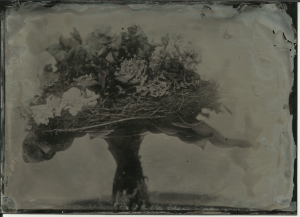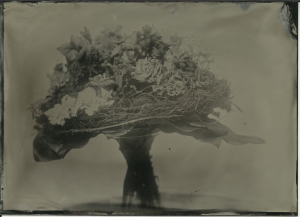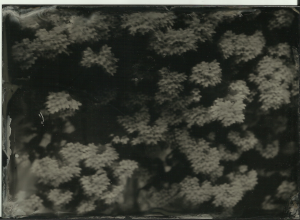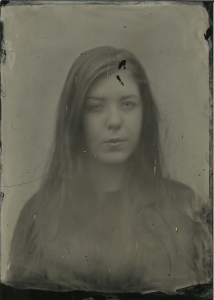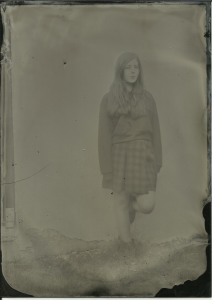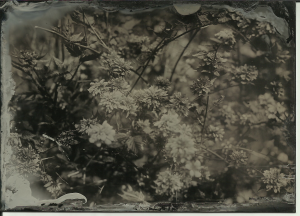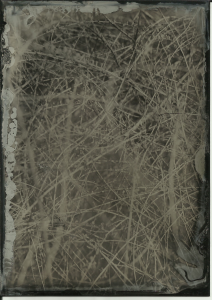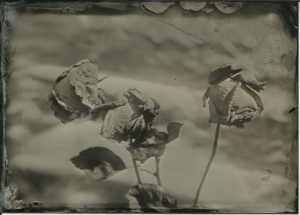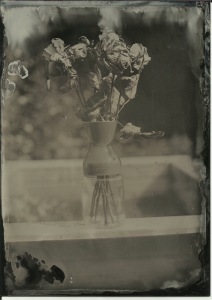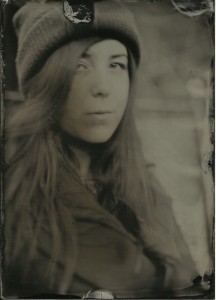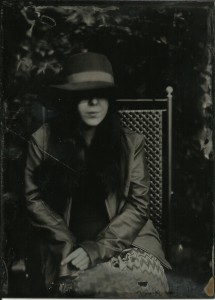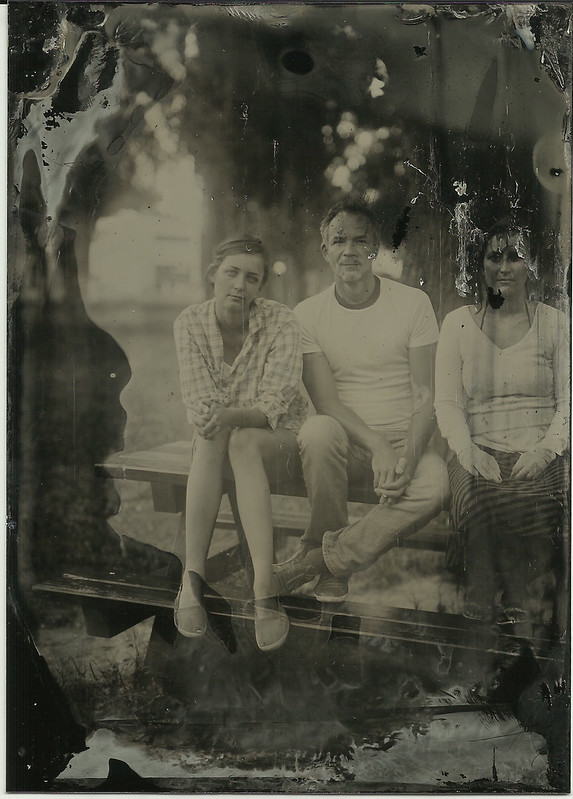
Natali, Laurent, and Agnes
(I also gush a little about wet plate collodion here on medium.com.)
Vienna photographer Agnes Prammer uses a variety of technologies, including wet plate collodion. I wrote about meeting Agnes last October. Since then I have been bugging her to give a workshop.
Last weekend she did and I signed up and the universe did not smite me and I went and this is the story.
Wet plate collodion photography, executive summary: coolest photographic technology ever.
How it is done: collodion solution poured over metal or glass plate to form thin layer. When it gets a little tacky, but not dry, it is put in a silver nitrate bath. This gives you a light-sensitive emulsion. The plate goes into a plate holder, that goes into the camera, the lens cap is removed (there is no shutter), the plate is exposed, the lens cap is replaced, the plate holder is taken to the darkroom, where developer is poured over it, (these steps must all be completed before the plate dries out, hence the name) then once it develops washed off with water to stop the process, then put into the fixative solution, then a water bath, and you’re done.
It’s that simple.
The first day was devoted to technical and theoretical stuff, the second day we went outside to a park by the Alte Donau and took pictures.
I won’t go into the technical and theoretical angle here, it’s all available online if you’re interested, although it is very useful to hear face to face in a workshop. A couple of interesting facts, though: it dates back to the 1850s; collodion contains ether, that explosively flammable party drug of the 19th century; fixative solution sometimes contains cyanide (which we did not use thank god).
The image at the top of this post is my first attempt at wet plate photography. It shows the other participants, left to right: Agnes’s assistant Natali, Laurent, and Agnes.
Look at that picture. Don’t you just want to give them a hug? I sure did, when I walked into the studio where they were sitting around the table talking about ether and cyanide, but acting like Lennie Small is a bad idea in the first impressions department so I held myself back.
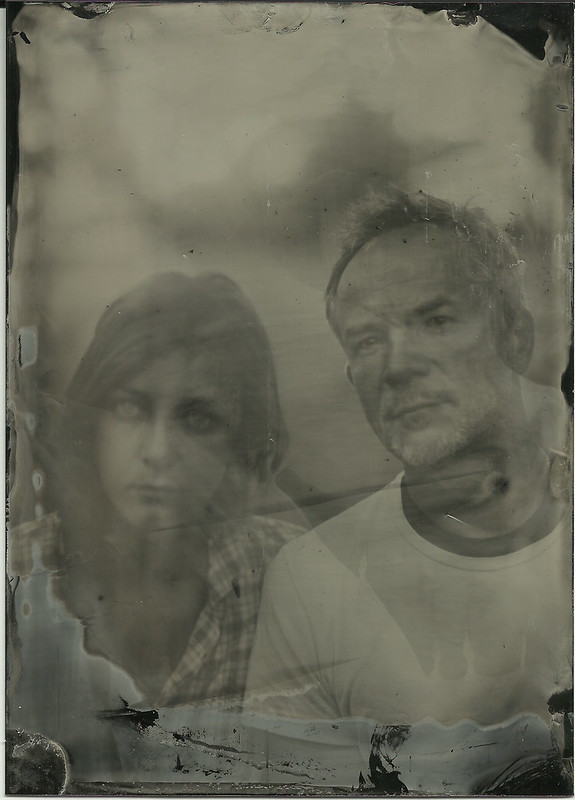
Natali and Laurent
Weather was changeable. Mostly cloudy, a little windier than necessary, the second day. We shot in a park near the Alte Donau, water off the Danube by the Vienna International Centre where there are a lot of parks, boats, swimming, etc. We started off by mixing developer and for some reason no police showed up to ask what we were up to, sitting around a picnic table with our chemicals and rubber gloves like an early episode of Breaking Bad.
Then we took pictures with Agnes’s antique camera and developed the plates in her portable darkroom, which she made from a baby carriage. The camera, enormous, with a black cloth you put over your head to see the frosted glass plate when you compose and focus the picture, is a great ice breaker. Quite a few people stop to ask questions.

Natali
Wet plate collodion photography is a slow, fussy process. At the fastest, you can get a plate prepared, shot and developed in about fifteen minutes. I got three made all day, and they all are ruined by a variety of technical mistakes I made – pouring the collodion wrong, poor composition, poor focusing, pouring developer wrong, developing for too long, overexposure, light leaks in the darkroom, and a number of other things.
All the same, they are the best photos I have ever taken. Wet plate photography is my new favorite art form. Even in my inexperienced hands, it captures something magical and wonderful about humans that other forms of photography miss – and you should really go look at Agnes’s website to see what a talented photographer can do with it.
When I got home Saturday night, I went for a walk along the creek with my wife and gushed about the workshop and the people I had met.
“It was the coolest thing I have done since I took a pee with Boris Yeltsin at the Moscow airport men’s room in 1988,” I said.
“That’s what you said after you did your public performance of your composition for theremin, soprano and cash register a few years ago,” she said.
“I think this was even cooler,” I said.
Then something else happened. It got dark and the world came out and I saw it all — everything I looked at I saw: green fields of wheat white in the dark, the moon reflecting in the creek, the black shrubs and blacker path. The church steeple and the wino sitting at a picnic table under the half dead wild cherry tree and the bugs swarming the floodlights of the tennis club.
I saw it all with new eyes, thanks to doing something new, I guess.
